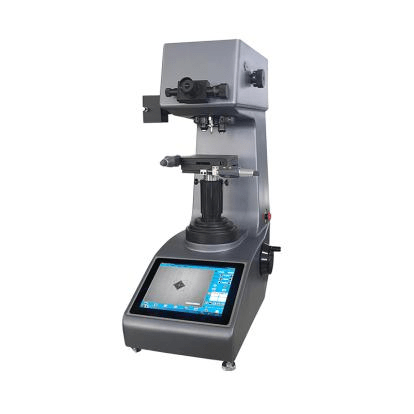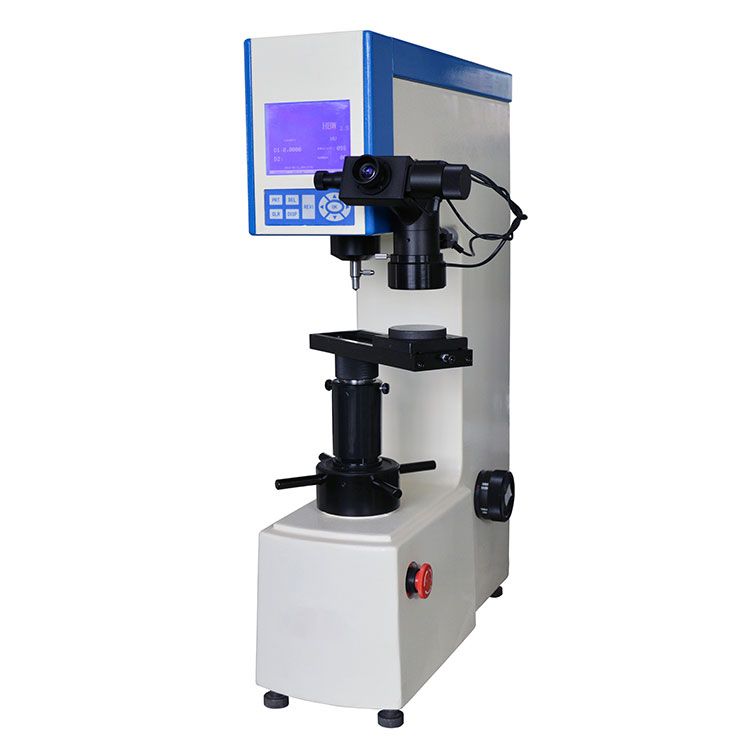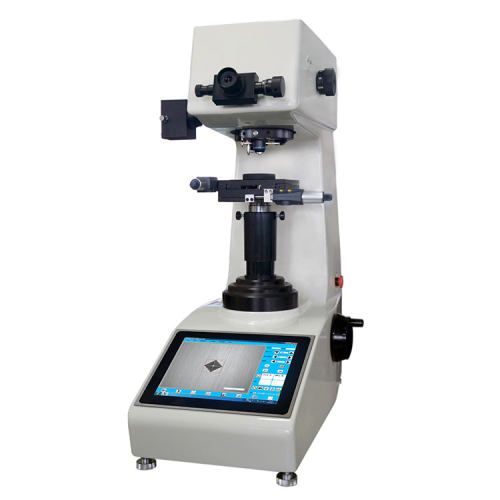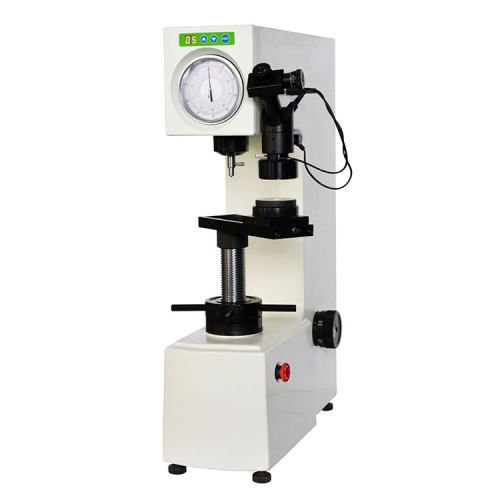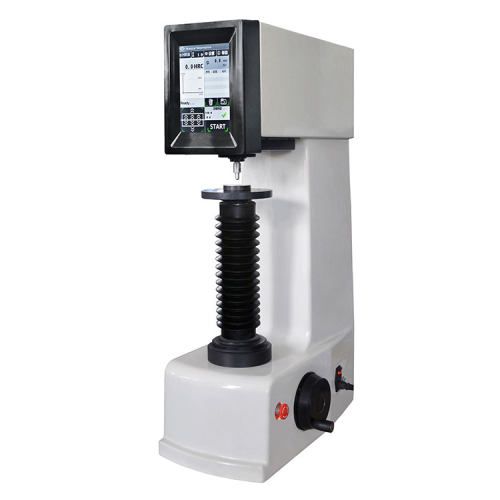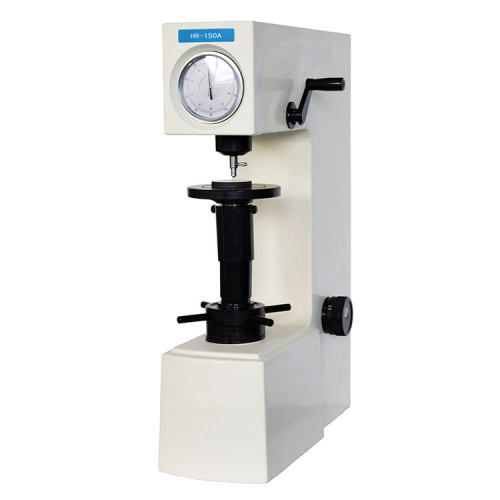A tool used for determining a material’s hardness is called a hardness tester. The resistance of a material to long-term deformation is measured by its hardness. It is a crucial characteristic of materials since it influences their hardness, strength, and resistance to wear. Two of the most popular kinds of hardness testers are the Vickers hardness testers and Rockwell hardness testers. Both apply a load to a material using a typical indenter and then measure the indentation that results.
Key Differences Between the Rockwell Hardness Tester and a Vickers Hardness Tester
Difference 1: Test load Range
Regarding load range, the primary distinction between the Rockwell and Vickers hardness testers is that the former employs a more limited range of loads, whereas the latter employs a more expansive range.
A test load of 60, 100, or 150 kgf is used by the Rockwell hardness tester, depending on the material being tested and the required hardness scale. Because the Rockwell tester is intended to evaluate a broad range of materials, from soft to hard, its load range is limited.
Vickers hardness test load range from 1 to 1000 kgf. The Vickers tester is intended to test a broad variety of materials, including hard materials and materials with thin surfaces, which explains its greater load range.
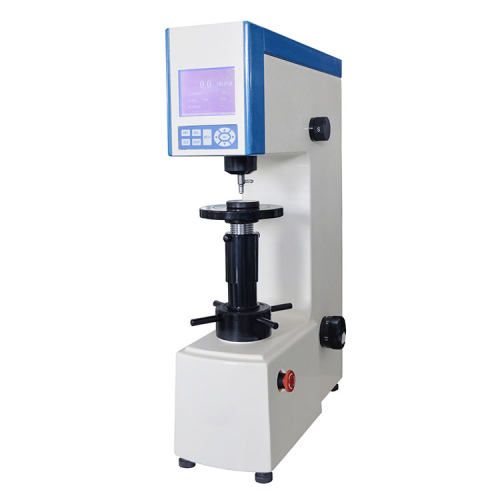
Difference 2: Hardness Scale
Two distinct measures are used to quantify the hardness of materials: the Vickers hardness scale and the Rockwell hardness scale. There are other divisions within the Rockwell hardness scale, including HRB, HRC, and HRA. A single scale that may be used to test a variety of materials is the Vickers hardness scale.
The depth to which a hardened steel ball or a diamond cone indenter can penetrate a material is the basis for the Rockwell hardness scale. Rockwell hardness numbers, denoted by HR and a letter specifying the scale used, are used to measure hardness. As an illustration, the Rockwell hardness scale HRB uses a 1/16-inch hardened steel ball indenter and a force of 100 kg, whereas HRC uses a 120-degree diamond cone indenter and a load of 150 kg.
The area of a square indentation created by a diamond pyramid indenter serves as the basis for the Vickers hardness scale. Vickers hardness numbers denoted as HV, are used to quantify hardness. By dividing the load applied to the indenter by the area of the indentation, one can determine the Vickers hardness number.
Difference 3: Applications
Hardness testers of the Rockwell and Vickers varieties are among the most widely utilized in the industry. Both testers apply a load to a material using a typical indenter and then measure the indentation that results. The two testers do differ significantly in a few important areas, though, such as the application for which they work best.
One of the applications of Rockwell hardness testers is examining a broad variety of materials, such as ceramics, polymers, and metals. They work effectively for testing materials ranging from soft to hard in terms of hardness. In addition to being user-friendly and reasonably priced, Rockwell hardness testers are a well-liked option for general-purpose hardness testing.
One of the applications of Vickers hardness testers is testing materials with thin surfaces and hard materials. Additionally, they work effectively for evaluating materials with a limited range of hardness values. Although Vickers hardness testers are more costly and require more skill to operate, they are typically more accurate than Rockwell hardness testers.
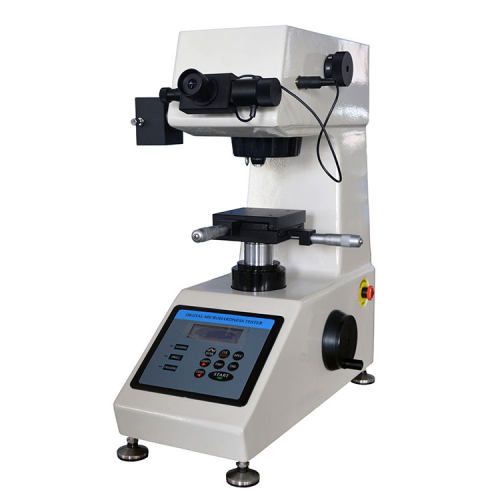
Difference 4: Price
Numerous factors, including the brand, model, features, and additional services included, might affect the Rockwell hardness tester price or Vickers hardness tester price. Vickers hardness testers price more than Rockwell hardness testers price, though. Here are some of the reasons why Vickers hardness testers are more expensive:
- Manufacturing Vickers hardness testers are more difficult. In comparison to the spherical or conical indenters used in Rockwell hardness testers, the pyramidal diamond used in Vickers indenters is more challenging to produce.
- More accurate optical systems are needed for Vickers hardness testing. The size of the indentation created by the indenter is measured using the Vickers hardness tester. The Vickers hardness tester needs a precise optical system to achieve this accurately.
- Vickers hardness testers are frequently employed in high-stress scenarios. Vickers hardness testers are frequently used to test materials with thin surfaces and hard materials. A hardness tester that is more precise and adaptable is needed for these applications.
Is There a Significant Difference in Accuracy Or Test Repeatability Between the Two Methods?
The accuracy and repeatability of Rockwell and Vickers hardness tests can vary depending on several factors, making it difficult to give a definitive answer. While Vickers generally offers better accuracy and repeatability, especially for harder materials, the choice between them depends on your specific needs and application. Consider the material properties, sample size, required accuracy level, budget, and operator skill when making your decision.
Accuracy
- Vickers: Generally considered more accurate, especially for harder materials. Its diamond indenter and larger indentation area provide a more precise measurement.
- Rockwell: Can be less accurate than Vickers, particularly for harder materials and thin samples. The spherical indenter can cause more material flow and affect the measurement. Additionally, the choice of scale and load can influence accuracy.
Repeatability
- Vickers: Generally good repeatability, especially with automated testing equipment. The diamond indenter and controlled test conditions minimize operator influence.
- Rockwell: Repeatability can be variable, depending on operator skill, test conditions, and material properties. The smaller indentation area and subjective nature of scale reading can introduce more variability.
Factors Influencing Accuracy and Repeatability
- Material properties: Harder materials are more challenging to test accurately with both methods.
- Sample thickness: Thin samples can be difficult to test accurately with Rockwell due to substrate influence.
- Operator skill: Operator skill plays a larger role in Rockwell testing due to the subjective scale reading.
- Test equipment: Modern and well-maintained equipment can improve both accuracy and repeatability for both methods.
- Testing standards: Following standardized testing procedures ensures consistency and reduces variability.
Conclusion
| Rockwell Hardness Tester | Vickers Hardness Tester | |
| Test Load Range | 10 kgf to 150 kgf | 1 gf to 120 kgf |
| Hardness Scale | Rockwell A, B, C, D, E, F, G, H, K, L, M, P, R, S, T, W, X, Y | Vickers HV |
| Applications | Metals, plastics, ceramics, rubber | Metals, ceramics, thin materials, coatings, hardened surfaces |
| Price | Less expensive | More expensive |
| Accuracy | Good, but less precise than Vickers | Excellent |
| Repeatability | Good, but can be affected by operator skill | Excellent |
The two types of hardness testers most frequently used in industry are Vickers and Rockwell testers. You can interact with others who use hardness testers more skillfully if you are aware of the differences between the two testers. Both the Vickers and the Rockwell hardness testers are adaptable instruments that are suitable for evaluating a broad variety of materials. There are situations in which one tester is more appropriate than the other. Vickers hardness testers, for instance, are typically used to evaluate hard materials and materials with thin surfaces. Soft material tests are often best performed with Rockwell hardness testers.
